TAF14 / YPL129W Overview
- Standard Name
- TAF14 1
- Systematic Name
- YPL129W
- SGD ID
- SGD:S000006050
- Aliases
- ANC1 55 , TafII30 , SWP29 24 , TAF30 42 , TFG3 42
- Feature Type
- ORF , Verified
- Description
- Subunit of TFIID, TFIIF, INO80, SWI/SNF, and NuA3 complexes; involved in RNA polymerase II transcription initiation and in chromatin modification; serves as an additional DNA binding domain for the complex; contains a YEATS domain 1 2 3 4 5 6 7 8 9
- Name Description
- TATA binding protein-Associated Factor
- Comparative Info
-
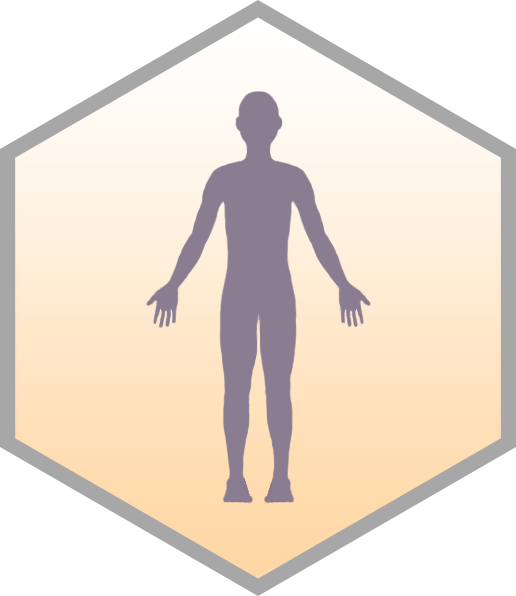
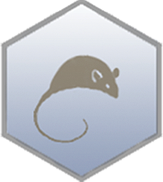
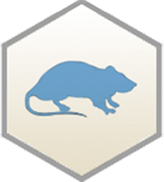
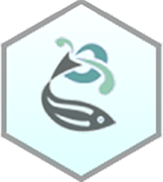
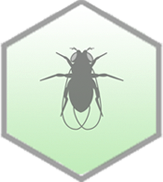
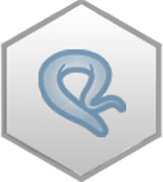
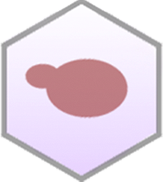
Sequence
The S. cerevisiae Reference Genome sequence is derived from laboratory strain S288C. Download DNA or protein sequence, view genomic context and coordinates. Click "Sequence Details" to view all sequence information for this locus, including that for other strains.
- Summary
- TAF14/YPL129W is located on the left arm of chromosome XVI between SPO19 meiosis-specific prospore protein and TBF1 telobox-containing general regulatory factor; coding sequence is 840 nucleotides long with an intron at coordinates 10..114 and no SNPs
Analyze Sequence
S288C only
BLASTN | BLASTP | Design Primers | Restriction Fragment Map | Restriction Fragment Sizes | Six-Frame Translation
S288C vs. other species
BLASTN vs. fungi | BLASTP at NCBI | BLASTP vs. fungi
S288C vs. other strains
Protein
Basic sequence-derived (length, molecular weight, isoelectric point) and experimentally-determined (median abundance, median absolute deviation) protein information. Click "Protein Details" for further information about the protein such as half-life, abundance, domains, domains shared with other proteins, protein sequence retrieval for various strains, physico-chemical properties, protein modification sites, and external identifiers for the protein.
- Summary
- Taf14p is 244 amino acids long, of average half-life, low in abundance; contains disordered region in middle of protein; ubiquitinylated on K149 and K181; sumoylated on 3 lysines, phosphorylated on 8 residues
- Length (a.a.)
- 244
- Mol. Weight (Da)
- 27431.4
- Isoelectric Point
- 4.95
- Median Abundance (molecules/cell)
- 5966 +/- 2895
- Half-life (hr)
- 10.5
Alleles
Curated mutant alleles for the specified gene, listed alphabetically. Click on the allele name to open the allele page. Click "SGD search" to view all alleles in search results.
View all TAF14 alleles in SGD search
Gene Ontology
GO Annotations consist of four mandatory components: a gene product, a term from one of the three Gene Ontology (GO) controlled vocabularies (Molecular Function, Biological Process, and Cellular Component), a reference, and an evidence code. SGD has manually curated and high-throughput GO Annotations, both derived from the literature, as well as computational, or predicted, annotations. Click "Gene Ontology Details" to view all GO information and evidence for this locus as well as biological processes it shares with other genes.
- Summary
- DNA binding protein and RNA polymerase II general transcription initiation factor involved in chromatin remodeling, histone acetylation, transcription by RNA polymerase II and transcription initiation at RNA polymerase II promoter; subunit of Ino80 and NuA3 histone acetyltransferase; localizes to nucleus
View computational annotations
Molecular Function
- Manually Curated
- enables DNA binding (IDA)
- enables RNA polymerase II general transcription initiation factor activity (IDA)
Biological Process
- Manually Curated
- involved in chromatin remodeling (IDA)
- involved in transcription by RNA polymerase II (IDA)
- involved in transcription initiation at RNA polymerase II promoter (IDA)
Cellular Component
- Manually Curated
- part of Ino80 complex (IPI, IDA)
- part of mediator complex (IDA)
- part of NuA3 histone acetyltransferase complex (IDA)
- part of NuA3a histone acetyltransferase complex (IDA)
- part of NuA3b histone acetyltransferase complex (IDA)
- located in nucleus (IDA)
- part of SWI/SNF complex (IDA)
- part of transcription factor TFIID complex (IDA)
- part of transcription factor TFIIF complex (IDA, IPI)
Complex
Macromolecular complex annotations are imported from the Complex Portal. These annotations have been derived from physical molecular interaction evidence extracted from the literature and cross-referenced in the entry, or by curator inference from information on homologs in closely related species or by inference from scientific background.
Phenotype
Phenotype annotations for a gene are curated single mutant phenotypes that require an observable (e.g., "cell shape"), a qualifier (e.g., "abnormal"), a mutant type (e.g., null), strain background, and a reference. In addition, annotations are classified as classical genetics or high-throughput (e.g., large scale survey, systematic mutation set). Whenever possible, allele information and additional details are provided. Click "Phenotype Details" to view all phenotype annotations and evidence for this locus as well as phenotypes it shares with other genes.
- Summary
- TAF14/YPL129W is a non-essential gene; null mutants are viable, slow-growing, and associated with a range of phenotypes that significantly influence cellular behavior and overall fitness. Mutants lacking TAF14 exhibit decreased resistance to acidic pH levels, which may compromise their survival in acidic environments. The morphology of the actin cytoskeleton and buds is abnormal, potentially disrupting normal cellular structure and division processes. Additionally, these mutants experience an increased duration of cell cycle progression during the G1 phase, leading to delays in cell division. While cell size is increased, the chronological lifespan of these mutants is decreased, indicating a trade-off between growth and longevity. Competitive fitness is impaired, resulting in decreased viability in resource-limited environments. Endocytosis is also reduced, which may hinder nutrient uptake and cellular function. The growth rate during the exponential phase is diminished, and these mutants show increased sensitivity to heat, making them more vulnerable to elevated temperatures. Resistance to hydrostatic pressure, hyperosmotic stress, and metal exposure is decreased, further highlighting their compromised resilience. Additionally, osmotic stress resistance is reduced, and the ability to withstand enzymatic treatment is diminished. Shmoo formation, a response to mating signals, is abnormal in these mutants, which may affect reproductive success. The subcellular morphology is also altered, and transposable element transposition is decreased, indicating disruptions in genomic stability. Resistance to ultraviolet radiation is reduced, and vacuolar morphology is abnormal, which could impact cellular storage and waste management. Conditional mutants have abnormal bud morphology. When TAF14 is overexpressed, there is an increase in colony sectoring, and abnormal silencing.
Classical Genetics
- null
- actin cytoskeleton morphology: abnormal
- chromosome/plasmid maintenance: decreased
- growth in exponential phase: decreased rate
- heat sensitivity: increased
- hydrostatic pressure resistance: decreased
- metal resistance: decreased
- osmotic stress resistance: decreased
- protein/peptide accumulation: decreased
- protein/peptide modification: decreased
- resistance to chemicals: decreased
- resistance to enzymatic treatment: decreased
- shmoo formation: abnormal
- subcellular morphology: abnormal
- UV resistance: decreased
- vegetative growth: decreased
- conditional
- null
- acid pH resistance: decreased
- bud morphology: abnormal
- cell cycle progression in G1 phase: increased duration
- cell size: increased
- chemical compound accumulation: abnormal
- chemical compound accumulation: increased
- chronological lifespan: decreased
- competitive fitness: decreased
- endocytosis: decreased
- haploproficient
- hydrostatic pressure resistance: decreased
- hyperosmotic stress resistance: decreased
- metal resistance: decreased
- nutrient utilization: decreased
- protein/peptide distribution: abnormal
- replicative lifespan: increased
- resistance to chemicals: decreased
- resistance to chemicals: normal
- resistance to enzymatic treatment: decreased
- toxin resistance: decreased
- toxin resistance: increased
- transposable element transposition: decreased
- vacuolar morphology: abnormal
- vegetative growth: decreased rate
- viable
- overexpression
Large-scale Survey
Interaction
Interaction annotations are curated by BioGRID and include physical or genetic interactions observed between at least two genes. An interaction annotation is composed of the interaction type, name of the interactor, assay type (e.g., Two-Hybrid), annotation type (e.g., manual or high-throughput), and a reference, as well as other experimental details. Click "Interaction Details" to view all interaction annotations and evidence for this locus, including an interaction visualization.
- Summary
- Taf14p interacts physically with proteins involved in transcription; TAF14 interacts genetically with genes involved in transcription and chromatin organization
699 total interactions for 333 unique genes
Physical Interactions
- Affinity Capture-MS: 357
- Affinity Capture-RNA: 6
- Affinity Capture-Western: 53
- Co-crystal Structure: 5
- Co-localization: 2
- Co-purification: 15
- Far Western: 1
- PCA: 5
- Protein-peptide: 3
- Proximity Label-MS: 1
- Reconstituted Complex: 22
- Two-hybrid: 9
Genetic Interactions
- Dosage Rescue: 5
- Negative Genetic: 128
- Phenotypic Enhancement: 8
- Positive Genetic: 46
- Synthetic Growth Defect: 15
- Synthetic Haploinsufficiency: 1
- Synthetic Lethality: 17
Regulation
The number of putative Regulators (genes that regulate it) and Targets (genes it regulates) for the given locus, based on experimental evidence. This evidence includes data generated through high-throughput techniques. Click "Regulation Details" to view all regulation annotations, shared GO enrichment among regulation Targets, and a regulator/target diagram for the locus.
Expression
Expression data are derived from records contained in the Gene Expression Omnibus (GEO), and are first log2 transformed and normalized. Referenced datasets may contain one or more condition(s), and as a result there may be a greater number of conditions than datasets represented in a single clickable histogram bar. The histogram division at 0.0 separates the down-regulated (green) conditions and datasets from those that are up-regulated (red). Click "Expression Details" to view all expression annotations and details for this locus, including a visualization of genes that share a similar expression pattern.
Summary Paragraph
A summary of the locus, written by SGD Biocurators following a thorough review of the literature. Links to gene names and curated GO terms are included within the Summary Paragraphs.
Last Updated: 2009-10-02
Literature
All manually curated literature for the specified gene, organized into topics according to their relevance to the gene (Primary Literature, Additional Literature, or Review). Click "Literature Details" to view all literature information for this locus, including shared literature between genes.